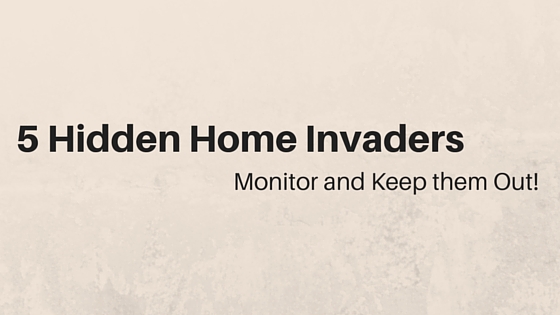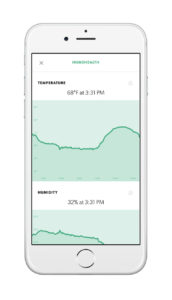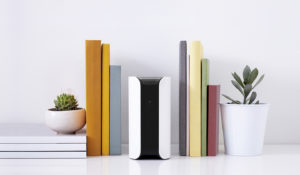
A few episodes, I was privileged to have Caroline Blazovsky, the Healthy Home Expert, on the show. Caroline has kindly followed up with this list of top 5 hidden home invaders and some handy hints about what to do about them using a Canary.

1. Dust Mites – Gone!
These creeping looking microscopic critters, feed on our dander from pets and humans and produce proteins that give us allergies! Warm, wet conditions can make them multiply.
Reduce temperature and humidity to help reduce dust mites. Dust mites love warm humid conditions above 70F and 50% relative humidity. National Institute of Health says effective control you should keep relative humidity below 50%. Use a Canary (the most recent home health device with phone app) to monitor these conditions in your home and set to proper levels and be warned when conditions are not optimal.
2. Mould – No Way!
Moulds are like people, they need food, air and water to survive. Remove water sources to keep them out!
Water in the home can contribute to mould growth. Bathrooms, Basements, Leaking roofs, faulty plumping and too much humidity can all be sources. Keep humidity down in your home to control mould growth, optimal levels for humidity are 30-50%. Canary can help you monitor relative humidity by alerting your phone that levels in your home are too high, preventing nasty mould from forming.
3. VOCs and Gases – Keep Them Low!
We have numerous sources in our home that contribute to VOCs and gases. Some of these are necessary like heating fuel, and building products, but some are unnecessary like many chemicals from cleaners, personal care products and automobiles. Reduce volatile organic compounds. When you have too many chemicals in the home, your Total Volatile Organic Compounds (TVOC) levels become elevated which compromise your indoor air quality and may affect your overall health. If Canary tells you have abnormal or very abnormal levels in air quality you may have too many VOCs & gases in the home or be facing a more serious condition such as: elevated carbon monoxide or gas leak. By monitoring items like Hydrogen compounds, Ethanol, IsoButane, Methane, you can warned when the chemical level is high in the home. We recommend hiring a professional at this time to evaluate your home, remove chemical sources and ventilate your space for improved health.
4. Carbon Monoxide – We Don’t Want it!
Carbon Monoxide is an odourless, colourless, toxic flammable gas formed by incomplete combustion found in items that burn fuels: cars, stoves, fireplace, and furnaces. Carbon Monoxide binds to our blood! We are very familiar that in very high levels, it can cause death. But low levels over an extended time are known to contribute to chronic health problems too. We need to be monitoring at low and high levels, most traditional monitors will only be triggered at high levels. The Canary can let you know before things get to extreme and dangerous levels, monitor every day to make sure low levels are identified and fixed. Always, have a yearly inspection of your furnace, chimney and exhaust pipes. Have the gas company check your home periodically for gas leaks and CO! Be able to see smoke, a fire, or call authorities when you are not home.
5. Formaldehyde – is Everywhere. Reduce!
After the recent flooring scare in the media, we should all be aware of Formaldehyde. It is in everything from building materials to personal care products. It is also naturally occurring and can be found in wood and the atmosphere. BUT, because it’s everywhere does not make it healthy! In fact, it is a probable Carcinogen according to the EPA. Too much exposure is not good for us. New construction and remodelling in our homes can raise formaldehyde levels. Also read your personal care products, so many contain formaldehyde or derivatives of this chemical. It name may be disguised under various terms one being –Urea. Monitor for formaldehyde every 5 years, or if you have done remodelling or have just moved into a new home, you should test after the completion of your project, to make sure you air is safe and ventilated.
About the Author
Caroline Blazovsky is a national healthy home expert with over 16 years of experience working with the public and physicians to create healthy living spaces and improve wellness. Her certifications and education include knowledge of mold, indoor air quality, chemicals in the home, green building, healthy homes and allergies. Caroline was featured in AARP this year as a leading health and safety expert. She is a public educator in the media, radio, television and print. She is also President of MY HEALTHY HOME®, a green company that offers testing services, products and consultations for homes throughout the US.





Leave a Reply